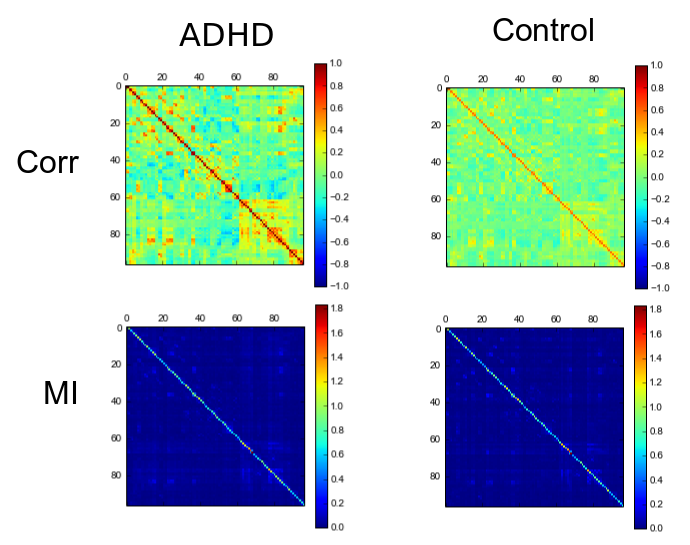This week we have been clarifying the issues involved on MVGC’s statistical model. Namely, the model to calculate the residuals that we use to measure the causality could be interpreted in a different way that we need to have well settled. Once we have identified the problem and clarified how this model should better be, we will shortly readdress and implement the experimentation done.
Testing on real datasets
We did our first systematic efforts to test workflows integrally with fMRI data and find if the results were coherent with the technique.
Materials and methods:
- Data was used from the ADHD200 initiative as recommended . For this purpose, I selected the preprocessed NeuroImage dataset (4mm voxel size).
- Data sampling: After having downloaded the data, we ruled out several subjects from the study (left handed…), resulting in 34 total subjects and then they were classified in 2 main groups: Controls and ADHD patients (20/14).
- Image processing: I extracted the mean timeseries of this data using the cc400 and cc1000 masks and performed a test analysis. Corr, TE and MI were computed over the series. Here I show resulting matrixes for the cc400 parcellation (results for cc1000 were similar).

First numbers showed than calculating the mean CC, TE and MI matrices for each group, most of the measures were close to 0. The results for the 1000 ROI parcellation was similar. This is a behaviour that it was also shown for the YALE preprocessed subsample (ABIDE) that we have been using in previous attempts for these high parcellated masks.
We tried a similar approach with the data already extracted for cc400 and TT parcellations and while cc400 showed same results as our self-extracted series (we can say that our extraction method works fine) the TT parcellated data showed the following structures:

One can visually appreciate slight changes in ADHD patients compared to controls. There is the need of further analyzing these results, but it is not the aim of this study. This result outlined the possibility that some parcellations are better suited for specific analyses, and that the ability of different ROI layouts to parcellate a brain, may impact on the capacity of extracting information from the dataset.
Being the calculation of the measures the same for 90, 400 and 1000 regions, I can just visually appreciate clear structures in the parcellation of 90 regions (which does not actually say much about the data, that should be furtherly analyzed). This could have a major reason in the way that different parcellation masks are created. The measures were also tested over the same data in Matlab having the same results to test wheter our methods were correct or not.
Repository and invitation to collaborate
It was an important moment for us to be able to start interact on Github for two main reasons. Firstly, to be able to discuss and comment in a more applied way and have this in a single repository that everyone included on the complexity toolboxes could access (included CMI!). And secondly to have a repository that deployed on our cluster allow us to process large datasets to validate and document. This repository has unified on:
https://github.com/roijo/C-PAC_complexitytools
Similarly, knowing well ADHD200 and ABIDE (CORR is also there) was a necessary task to do that we are doing in common.
Finally, I have added a slightly modificated function used in a previous work by Cameron, that saves the results into a Nifti file, making it easier to keep the results and export them.